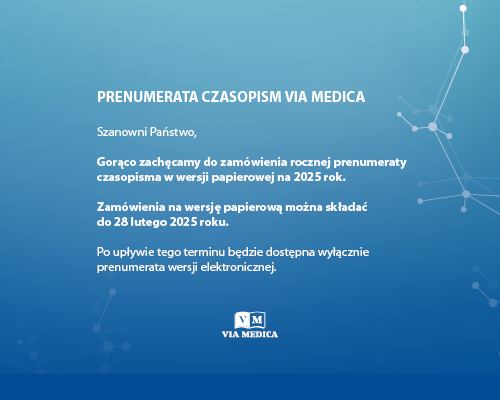Tom 6, Nr 1 (2013)
Praca badawcza (oryginalna)
Opublikowany online: 2013-03-07
Wyświetlenia strony
2268
Wyświetlenia/pobrania artykułu
13293
Analiza molekularnych i serologicznych markerów zakażenia HIV u polskich krwiodawców
Journal of Transfusion Medicine 2013;6(1):1-7.
Streszczenie
Wstęp: Zakażenia HIV są diagnozowane na podstawie wykrywania anty-HIV techniką EIA (enzyme immunoassay) i potwierdzane testami WB (Western Blot). W Polsce w 2003 roku rozpoczęto badania dawców metodami biologii molekularnej, wykrywającymi zakażenie przed pojawieniem się przeciwciał. Celem pracy była ocena wprowadzenia badań molekularnych na bezpieczeństwo przetoczeń i sprawność weryfi kacji wyników testów EIA, wykrywających anty -HIV i antygen p24.
Materiał i metody: Badania metodami EIA (Vironostika HIV Uni-Form II Ag/Ab, Bio- Merieux; HIVAg/Ab Combo Architekt, Abbott) i NAT przeprowadzano w RCKiK. Oznaczenia wykonywano w pojedyńczych donacjach metodą TMA (Procleix Ultrio, Chiron) lub w pulach po 24 donacje do 2006 r. (Cobas Ampliscreen, Roche Diagn); a od roku 2006 w pulach po 6 donacji metodą PCR (Cobas Taqscreen MPX Test). Próbki powtarzalnie reaktywne w EIA weryfi kowano w Instytucie Hematologii i Transfuzjologii (IHiT) testami WB (New Lav Blot I, Bio Rad; HIV1 Blot 1.3, MP Diagnostics) oraz techniką NAT (Procleix Ultrio Assy, Chiron).
Wyniki: W latach 2003–2008 przeprowadzono badania przeglądowe u 2 987 066 dawców. U 3 (0,0001%) osób wykryto zakażenie w okienku serologicznym, a u 4682 (0,16%) powtarzalnie reaktywne wyniki anty-HIV. W badaniach weryfikacyjnych u 154/4682 (3,3%) dawców z anty-HIV wykryto RNA HIV. U 7/4682 (0,15%) wynik testu WB w pierwszej próbce był wątpliwy; u 1/4682 (0,02%) ujemny. W następnym badaniu, przeprowadzonym po 3–4 tygodniach test WB był dodatni. U pozostałych 146/4682 (3,1%) osób obecność przeciwciał potwierdzono testem WB w pierwszej próbce.
Wnioski: Wprowadzenie badań molekularnych krwiodawców w kierunku zakażenia HIV1/2 podniosło bezpieczeństwo przetoczeń, gdyż: 1) umożliwiło wykrycie zakażenia u 3 krwiodawców, będących w momencie oddania krwi w okresie okienka serologicznego; 2) usprawniło weryfi kację reaktywnych wyników badań przeglądowych poprzez przyspieszenie diagnozy zakażenia HIV (wątpliwy wynik WB).
Słowa kluczowe: zakażenie HIVtesty EIAokienko serologicznetesty WBbadania metodami biologii molekularnejprzeciwciała anty-HIVRNA HIVkrwiodawcy





